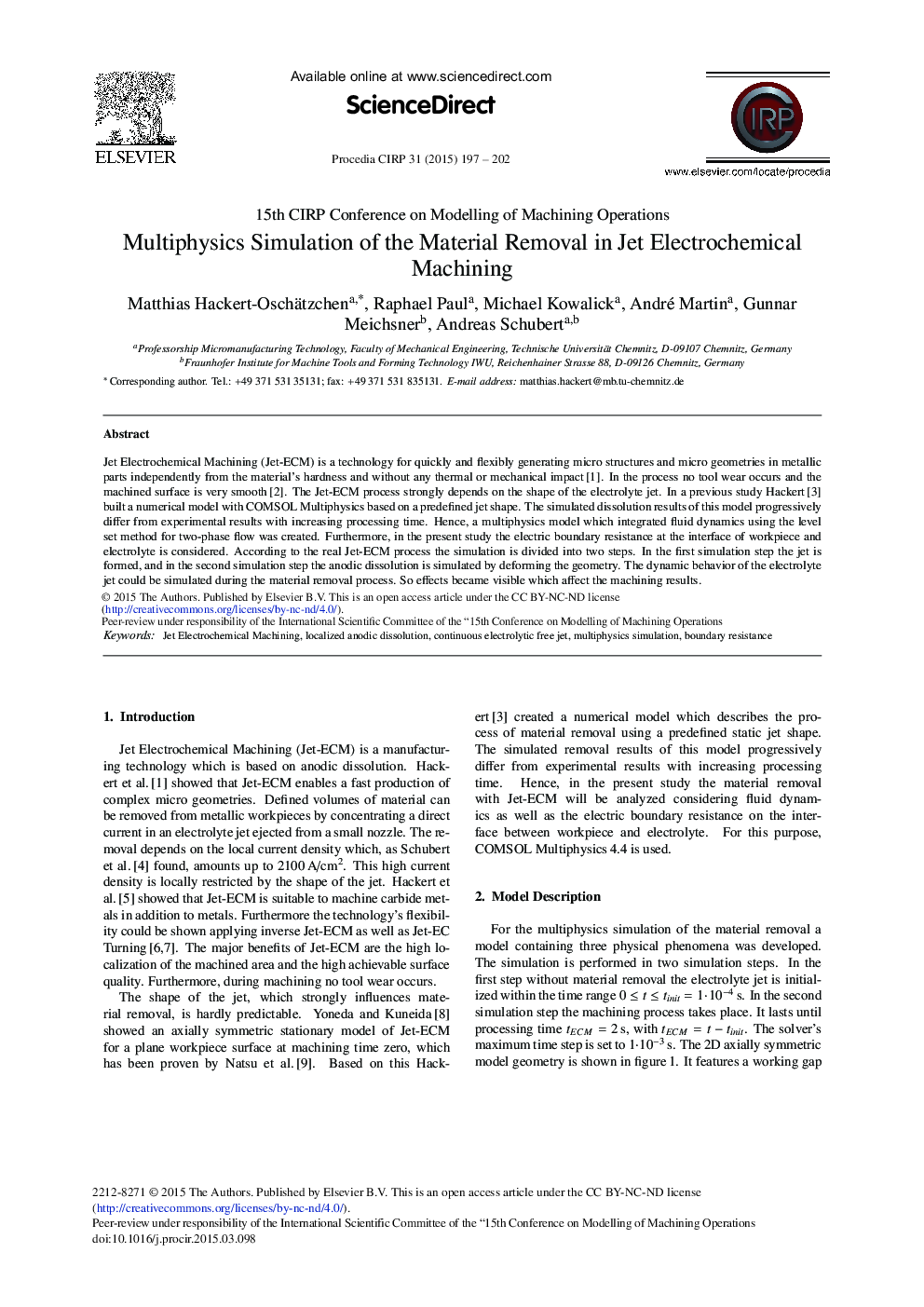| کد مقاله | کد نشریه | سال انتشار | مقاله انگلیسی | نسخه تمام متن |
|---|---|---|---|---|
| 1699635 | 1519321 | 2015 | 6 صفحه PDF | دانلود رایگان |
Jet Electrochemical Machining (Jet-ECM) is a technology for quickly and flexibly generating micro structures and micro geometries in metallic parts independently from the material's hardness and without any thermal or mechanical impact [1], . In the process no tool wear occurs and the machined surface is very smooth [2], . The Jet-ECM process strongly depends on the shape of the electrolyte jet. In a previous study Hackert [3] built a numerical model with COMSOL Multiphysics based on a predefined jet shape. The simulated dissolution results of this model progressively differ from experimental results with increasing processing time. Hence, a multiphysics model which integrated fluid dynamics using the level set method for two-phase flow was created. Furthermore, in the present study the electric boundary resistance at the interface of workpiece and electrolyte is considered. According to the real Jet-ECM process the simulation is divided into two steps. In the first simulation step the jet is formed, and in the second simulation step the anodic dissolution is simulated by deforming the geometry. The dynamic behavior of the electrolyte jet could be simulated during the material removal process. So effects became visible which affect the machining results.
Journal: Procedia CIRP - Volume 31, 2015, Pages 197-202
